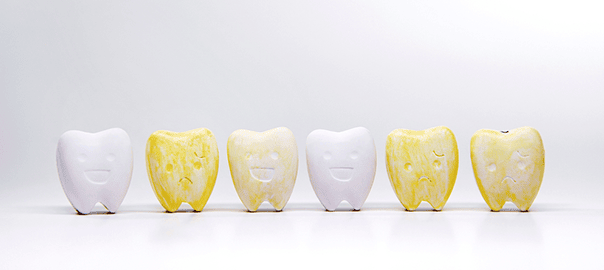
What Is Dental Fluorosis and How Is It Treated?
Dental fluorosis is a condition in which the look of tooth enamel deteriorates. It may occur if children drink fluoride regularly during their teeth-forming years, ages 8 and younger.
Most cases of dental fluorosis are mild to moderate, with white spots on the tooth surface that are barely visible and have little effect on dental function.
More extensive enamel alterations are caused by moderate and severe forms of dental fluorosis, which are significantly less common. Pits may form in the teeth in the rare, severe form. In communities where the fluoride content in the water is less than 2 milligrams per litre, the severe form rarely occurs.
So, if you are looking to read about Dental fluorosis, its treatment, and its symptoms, you are at the right place. In this article, we have got everything covered for you. So, keep reading it till the end.
Dental Fluorosis Symptoms – Signs of This Dental Disorder
Contact your dentist if you discover white streaks or patches on your child’s teeth or notice one or more discoloured teeth. This might be dental fluorosis symptoms.
Most cases are minor and do not result in permanent tooth damage, and extreme fluorosis cases are uncommon.
Fluorosis is a painless aesthetic ailment when it is minor. It can alter the appearance of tooth enamel, resulting in white “smudges” or “staining” on the surface.
However, according to the dentists, different types of fluorosis can be classified as below:
- Doubtful: There are minor variations in the enamel, ranging from a few white specks to a few white patches.
- Very mild: Less than 25% of the tooth surface is covered in little opaque paper-white patches.
- Mild: White opaque regions on the surface are more widespread, but they still only cover about half of the surface.
- Moderate: Half of the enamel surface is covered in opaque white patches.
- Severe: All surfaces of enamel are damaged. Pitting can also be found on the teeth, which can be distinctive or run together.
Dental Fluorosis Treatment
The majority of fluorosis cases are minor and do not require treatment. It could also only impact the rear teeth, which aren’t visible.
A variety of procedures can considerably enhance the appearance of teeth with moderate-to-severe fluorosis. So, here are some of the techniques used for dental fluorosis treatment:
- Veneers are custom-made shells that cover the front of the teeth to improve their appearance. In cases of severe fluorosis, this method is frequently utilized.
- MI Paste is a calcium phosphate substance that is occasionally used in conjunction with other treatments to reduce tooth discolouration, such as microabrasion.
- Another effective fluorosis treatment method is the use of dental crowns.
- Tooth whitening and other treatments for removing surface stains are available. Be careful that whitening your teeth may potentially worsen your fluorosis.
- Bonding is a procedure that involves coating a tooth with a strong resin that adheres to your enamel.
So, these are some of the techniques that are used to treat dental fluorosis. Don’t waste a second if you feel that this disease is at its severe level. Immediately consult the dentist.
Dental Fluorosis Causes – Things that Make Fluorosis Strong
Here we’ll talk about some of the causes of dental fluorosis. Things that can cause dental fluorosis and you easily avoid doing those things:
- Improper dental product use is the leading cause of dental fluorosis.
- Children frequently like the flavour of their toothpaste while brushing their teeth, to the point that they eat it rather than spit it out. It’s most likely not a major issue. We’ve all been in that situation. However, if your child makes a habit of it, now is an excellent opportunity to intervene.
- Fluoride levels in tap water and some fruit juices are sometimes high, failing to distinguish between disregarding and preserving general dental health. This is especially crucial to consider if you’re thinking about taking supplements.
- Fluorosis is caused by a variety of factors, including dental products. If a youngster is given more fluoride supplements than is necessary for any medical reason, the risk of fluorosis rises, albeit unwittingly.
Conclusion
Hundreds of children are admitted to hospitals each year for consuming too much fluoride, even though no serious cases have been identified.
As a result, whenever it’s time to wash your teeth, stay near your child. Remember to use only a pea-sized amount of toothpaste. It is more than sufficient to ensure adequate fluoride protection.
Make spitting out toothpaste a fun activity for your youngster so that they associate it with a positive experience. If you don’t want to encourage your youngster to spit (which is understandable), get them flavourless toothpaste.
Their grin will tell you everything you need to know about their health if you maintain fluoride consumption to safe levels and keep it away from the stomach.
DISCLAIMER:Please note that the prices mentioned on this page: (a) present a range (depending upon the severity of the dental condition, the technology used in treatment, type of dental products used, etc.); (b) are true as on the date of this page and may change on a later date, in accordance with the standard company policy; (c) may be subject to standard aberrations or generalizations on account of the use of AI in general Google/internet search by you.Leave a Reply
Leave a Reply
Explore More Similar Posts
Explore More Blogs


Leave a Reply